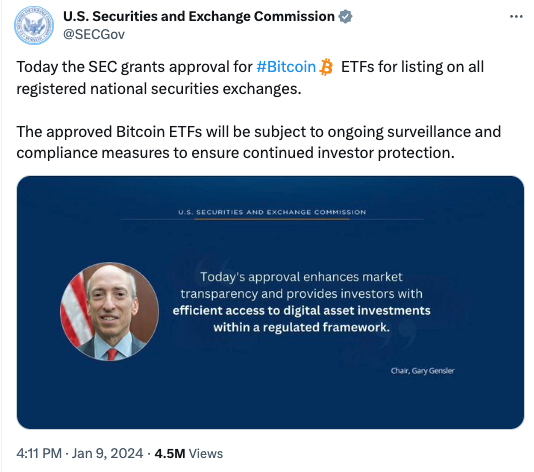SEC Hack Exposes Bitcoin's Vulnerability and Legal Consequences
Learn how the SEC hack manipulated bitcoin prices and highlighted critical cybersecurity vulnerabilities in financial markets. Discover the lessons for investors and regulators.

Key Points
- The SEC's X account was hacked, resulting in a misleading tweet that temporarily spiked bitcoin
prices by over $1,000.
- Eric Council Jr. was arrested and charged with crimes stemming from his involvement in the SIM swapping scheme that enabled the hack.
- This incident underscores the need for robust cybersecurity measures and investor awareness in the face of potential market manipulation.
In a world increasingly governed by the rapid pace of technological change, the intersection of finance and digital security is becoming more crucial every day. Recent events involving the U.S. Securities and Exchange Commission (SEC) and a rather audacious hack have underscored just how precarious this balance can be. On January 9, 2023, a false announcement leading to a spike in bitcoin prices caught not only the attention of investors but also that of federal authorities, culminating in an arrest that speaks volumes about the need for rigorous digital security protocols.
The Incident
The story begins with the SEC's X account, formerly known as Twitter, which was compromised by Eric Council Jr., a 25-year-old from
, Alabama. Council allegedly participated in a scheme that involved a SIM swapping tactic, enabling him access to sensitive information necessary to post a fraudulent message on the SEC’s official account. This message claimed that the SEC had approved bitcoin exchange-traded funds (ETFs), which drastically inflated the price of bitcoin by over $1,000 within a short period.

The implications of this event were significant. Once the SEC quickly disavowed the false message, it resulted in a sharp drop in bitcoin prices, which serves as a poignant reminder of how easily market dynamics can be manipulated through misinformation. This scenario not only affects investors but also poses a broader threat to the integrity of financial markets.
The Mechanism Behind the Hack
How did this happen? The process was rather brazen and methodical. Council, along with co-conspirators, utilized personal information from a victim, referred to as "C.L"., to create a fake ID. By doing so, he convinced a cell phone provider to issue a new SIM card linked to C.L.'s number. This allowed the hackers to receive access codes to the SEC's X account, not to mention post the misleading tweet.
This incident raises critical questions around cybersecurity protocols in place at high-profile organizations like the SEC. Why was there a lack of multifactord authentication, a basic security measure to protect sensitive accounts? The SEC had reportedly removed this security feature months prior to the hack, a decision they later corrected. The event has sparked renewed discussions about the security measures in place within both financial institutions and social media platforms.
The Legal Consequences
Following the incident, Eric Council Jr. was arrested and charged with conspiracy to commit aggravated identity theft and access device fraud. If convicted, he faces a maximum penalty of five years in prison. Such legal actions serve as a crucial deterrent against cybercrimes and highlight the justice system's commitment to keeping financial markets integrity intact.
Moreover, the incident has elicited a strong response from various sectors, involving not just the SEC but also the FBI, which is taking strides to hold perpetrators accountable. This kind of cross-agency cooperation is essential in navigating the increasingly complex landscape of cybercrime.
Moving Forward: Lessons to Learn
In response to the demands of a digital-first economy, companies and regulatory bodies must strengthen their cybersecurity frameworks. The SEC's situation serves as a critical case study illustrating the vulnerabilities present in existing systems. Implementing enhanced security measures, such as multifactor authentication and continuous monitoring, should be the baseline expectation for all institutions handling sensitive data.
Moreover, investors must educate themselves on the risks of cryptocurrency trading, especially in a landscape rife with potential scams and market manipulation tactics. The SEC's prompt response to the fraudulent post, along with the swift action taken against the responsible parties, should give investors some assurance that regulatory bodies are striving to protect market integrity.
Ultimately, navigating the world of cryptocurrency and digital securities requires a fine balance between innovation and security. As we move forward, let us take this incident as a lesson learned, encouraging both vigilance and accountability across the board.


